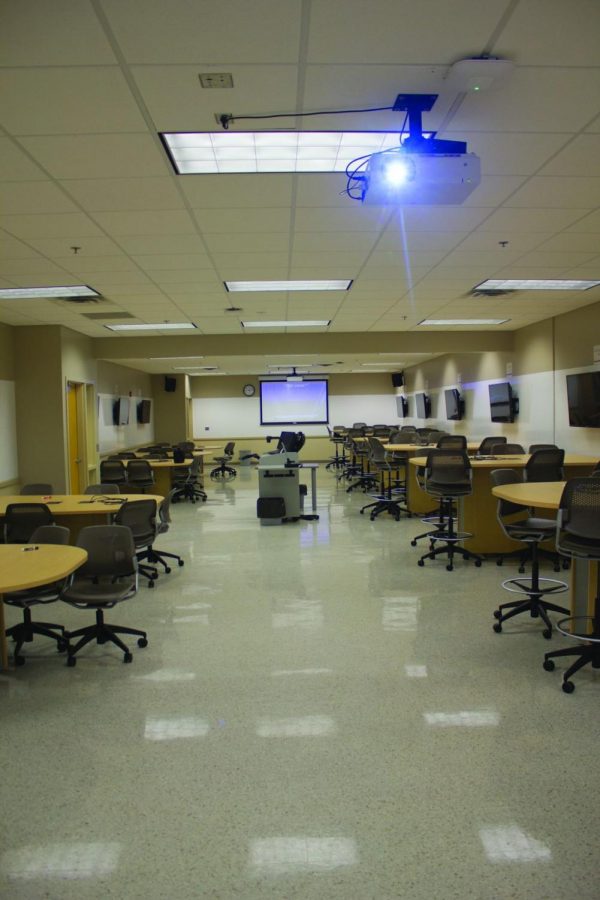99 classrooms scheduled for modernization and upgrades
August 27, 2014
A $10.5 million project will be implemented across campus by modernizing classrooms to fit the needs of SDSU students.
This summer, a total of seven classrooms were completed. The project is estimated to be completed in 2019, with a plan to update 99 classrooms. There were originally 125 classrooms on the list, but 26 of the classrooms were classified as unsuitable for updates due to classroom design or lack of accessibility.
“I would say there were three or four themes that quickly became apparent as we went from meeting to meeting and one of them was the state of our educational facilities,” said Provost Laurie Nichols.
There were 42 dialogue and listening sessions held to develop the strategic plan. The state of the classrooms was a topic that came up in the sessions. After the plan was created, the modernization project was developed.
“I thought that ‘we have got to attend to this [problem]’. This cannot be lost as we are creating our strategic plan,” Nichols said.
A task force was selected to tackle the project which was responsible for rating each classroom. The task force included a variety of faculty and staff members from Facilities and Services, the Library and various administrative positions on campus.
“They have done a phenomenal job,” Nichols said. “They simply totaled them up and if you had a really low score then you were a good classroom. If you had a really high score, then you were a really bad classroom,” Nichols said.
The task force tried to schedule poorly scoring classrooms to be updated in the first two years of the project and the classrooms that scored well to wait until the last three years of the project.
“I think it’s a great partnership between the university and private donors to really provide the best overall experience for students and faculty,” said Steve Erpenbach, President and CEO of the SDSU Foundation.
Half of the funding for the project is coming from the university and other portion is coming from private donors.
According to Erpenbach, the Foundation was contacted by the university to help fund the updates. Then they determined whether private donors would be interested in helping fund the project.
“Our donors find it very gratifying that they are able to help that next generation of students, that next generation of professors, because they had a great experience at South Dakota State and they are very intent on trying to pay it forward,” Erpenbach said.
The six types of classrooms are Seminar, Lecture Fixed, Lecture Mobile, Active Learning, Collaborative and High Tech Conference Seminar.
According to Nichols, the SDSU campus only had lecture fixed and lecture mobile classrooms before the modernization project began.
“What we know today about learning is the more you get students engaged and more active the more that they’ll learn. As we started doing in we need to diversify our classrooms,” Nichols said.
Seminar classrooms allow for lecture style teaching with students sitting in the back with the professor in the front. In a lecture-fixed classroom, the desks or tables are bolted down. Lecture-mobile classrooms are similar except they allow more flexibility.
“We had just started to build an active learning [classroom] when we were moving into this. They are wildly popular so we’re going to build more,” Nichols said.
Active Learning puts the students in “charge” of the classroom while the professor facilitates discussion and leads the class when needed.
According to Nichols, SDSU did not have any collaborative classrooms. Collaborative classrooms have space for activities and allow professors to implement a variety of teaching strategies.
“I think when a student walks into a classroom, the condition of the classroom and the overall aesthetics of the classroom sort of set your expectations in a way,” Nichols said.
The classrooms will be getting an overall update. The updates will vary depending on the condition of the classroom.
“It’s just been so much fun and it feels so good to be improving our campus and classrooms. I just think there’s nothing more important we can do,” Nichols said.
























